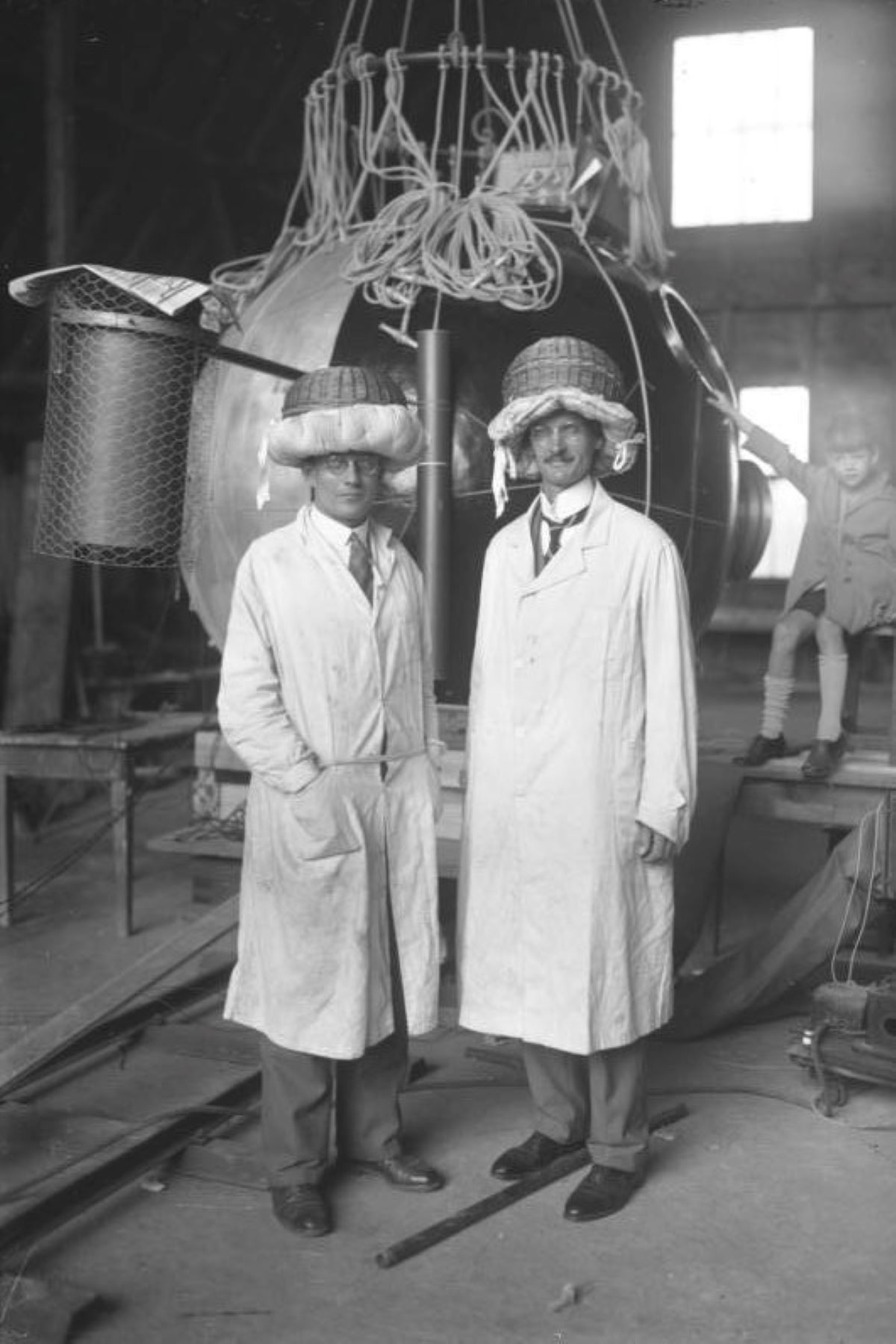May 27, 1931
Auguste Piccard, a world-renowned physicist and inventor, and his fellow physicist Paul Kipfer achieved a record-setting balloon flight in which they became the first human beings to enter into the stratosphere. (The stratosphere is the second layer of Earth’s atmosphere; it is located above the troposphere and below the mesosphere.)
Auguste Piccard and his identical twin brother Jean (likewise a pioneering high-altitude balloonist) had been born in the Swiss city of Basel in 1884. Auguste developed a strong interest in science early on in life. This interest ultimately encompassed a great deal of curiosity about both Earth’s upper atmosphere and the related possibilities of ballooning. In 1930, he designed and built a spherical, pressurized aluminum gondola that would allow him and others to achieve unprecedented flights into the stratosphere without any need for pressurized suits. The Belgium-based National Fund for Scientific Research provided financial support for Piccard to complete his gondola.
A large yellow helium balloon carrying Piccard and Kipfer inside that airtight black-and-white gondola took off from Augsburg, Germany, at 3:55 a.m. on May 27, 1931. This flight was Piccard’s third attempt to soar into the stratosphere. It took less than an hour for these trailblazing scientists to reach the stratosphere and, in doing so, achieve a record altitude of nearly 10 miles (16.1 kilometers).
An article published later that year in Popular Science magazine reported on the activities of Piccard and Kipfer during their time within the stratosphere. “Oxygen tanks kept them alive while they made observations,” recounted this article. “Through portholes, the observers saw the earth through copper-colored, then bluish haze . . . At the ten-mile [16.1-kilometer] level the sky appeared a deep, dark blue.”
The article then noted, “With observations complete, the observers tried to descend, but couldn’t. While their oxygen tanks emptied, they floated aimlessly over Germany, Austria, and Italy.” Piccard and Kipfer finally landed 17 hours after their first-of-a-kind trip had begun in Augsburg. According to Popular Science, “Cool evening air contracted the balloon’s gas and brought them down on a glacier near [the village of] Ober-Gurgl, Austria, with one hour’s supply of oxygen to spare.”
(The above photo of Piccard and Kipfer wearing improvised crash helmets was taken in 1930.)
Photo Credit: Bundesarchiv, Bild 102-11505/CC-BY-SA 3.0
Additional information on Auguste Piccard’s accomplishments, including the pioneering 1931 balloon flight into the stratosphere that he undertook with Paul Kipfer, is available at https://bertrandpiccard.com/3-generations/auguste-piccard

